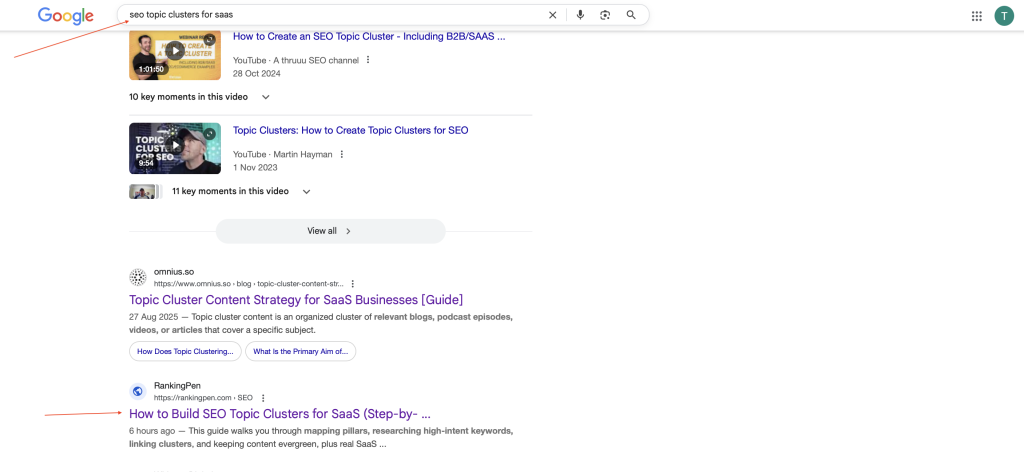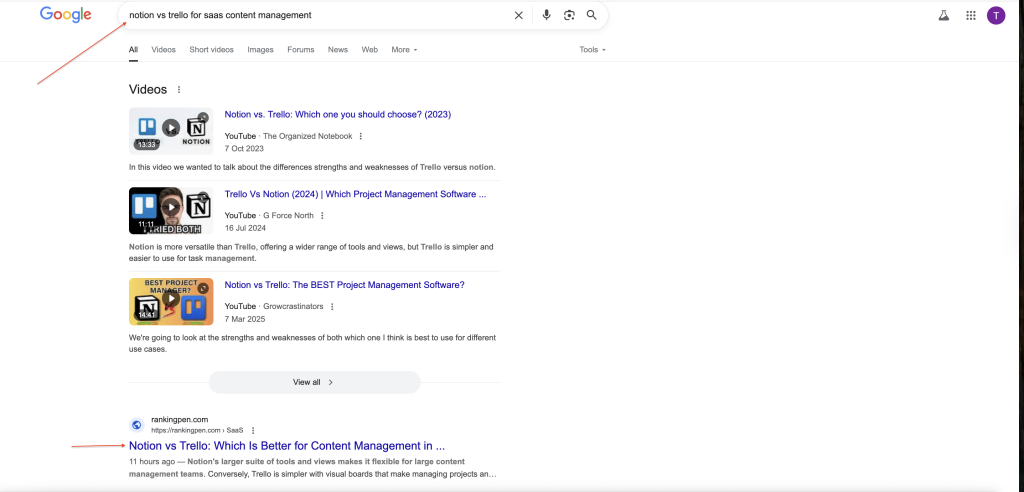
B2B SaaS Content Writing Examples That Speak for Themselves
From bottom-of-funnel blog posts to product-led comparison pages, these content samples show how we write for outcomes.

This 3,000-word, product-driven SEO guide shows SaaS brands how to create pillar pages and interlinked cluster content to dominate search results. Within just six hours of publication it ranked #2 on Google for both “SaaS topic clustering” and “SEO topic clusters for SaaS,” and was even featured in Google’s AI Overviews, beating out established domains.
The piece demonstrates advanced SaaS keyword research, search-intent mapping, evergreen content strategy, and rapid-indexing techniques, proving the ability to craft long-form content that drives immediate, high-intent organic traffic.

A long-form, SEO-optimized comparison article for SaaS marketing teams evaluating Notion and Trello for content management. The piece explores features, pricing, pros/cons, and use cases, guiding decision-stage readers toward the right choice for their workflows.
I optimized the article around high-intent keywords (“Notion vs Trello for SaaS content management,” “Trello vs Notion SaaS”), and it ranked #1 within 11 hours of publishing. Using feature tables, structured subheadings, and actionable recommendations, the content balances objective analysis with practical insights tailored to SaaS teams.
This piece demonstrates both decision-focused content strategy and RankingPen’s expertise in B2B SaaS content writing.
This informational article was written for CreditSuite to attract business owners searching for cash flow financing options. My task was to simplify a complex financial topic (“invoice factoring”) while targeting strategic keywords and answering user intent.
I conducted topic research, outlined key questions business owners typically ask, and structured the piece to rank for its target search terms. This piece was published under my name as a guest contributor on CreditSuite’s blog.
This long-form article explains programmatic advertising to Direct-to-Consumer (DTC) brands, breaking down how platforms like DSPs, SSPs, ad exchanges, and DMPs work together. It was ghostwritten for an adtech SaaS brand (Quantcast) and positioned as a TOFU–MOFU content piece aimed at attracting, educating, and nurturing DTC leads.
The article includes real-world examples (e.g., Dollar Shave Club, Warby Parker) and closes with a soft CTA into Quantcast’s DSP. I structured the article for clarity and search intent, and optimized it with SEO tools and semantic headings.
This in-depth comparison article breaks down Paddle vs. Stripe for SaaS billing, helping decision-stage buyers evaluate which solution best fits their tech stack and business model.
The piece was ghostwritten for a SaaS client (Boathouse), to position their Paddle-integrated billing portal as the smarter choice for SaaS startups. I structured the article with conversion in mind — balancing objective analysis with strategic product positioning, while including SEO-optimized headings and keywords for organic discovery.
This long-form article outlines seven strategic sports marketing techniques to boost brand loyalty, engagement, and revenue. Ghostwritten for a sports tech SaaS brand, the content was built to serve as a TOFU/MOFU asset, attracting and nurturing leads.
I worked closely with the team’s content strategist to structure the piece around pain points in fan engagement and activation, using real-world examples to support solution-based storytelling.

